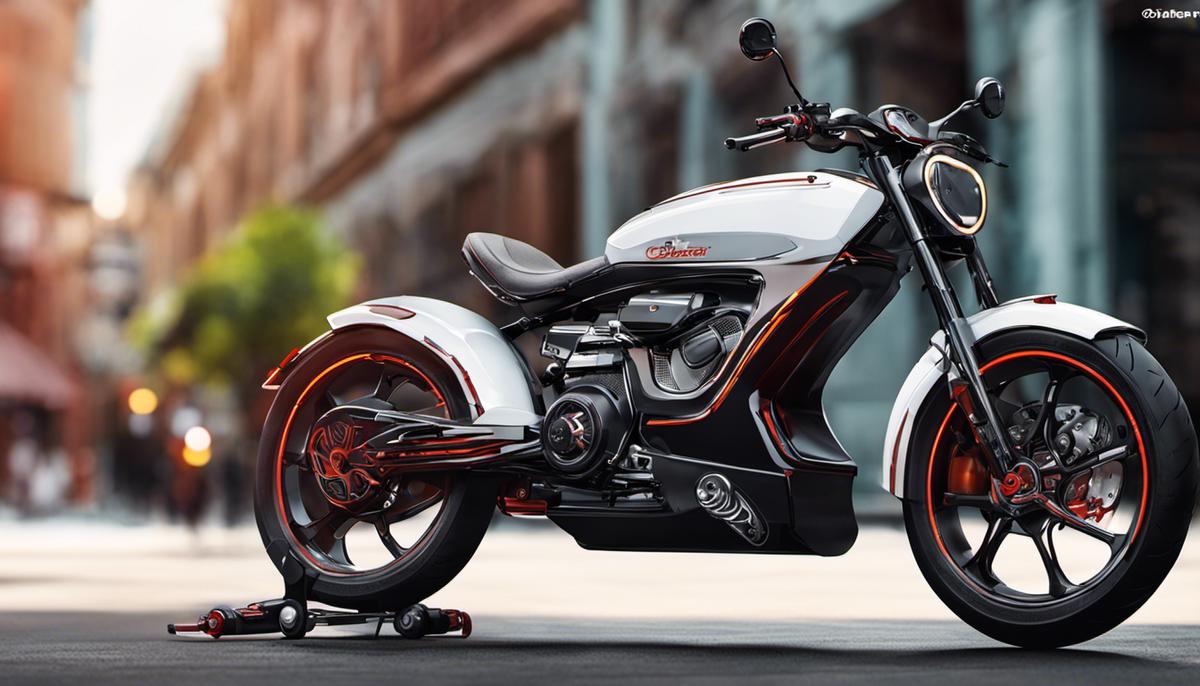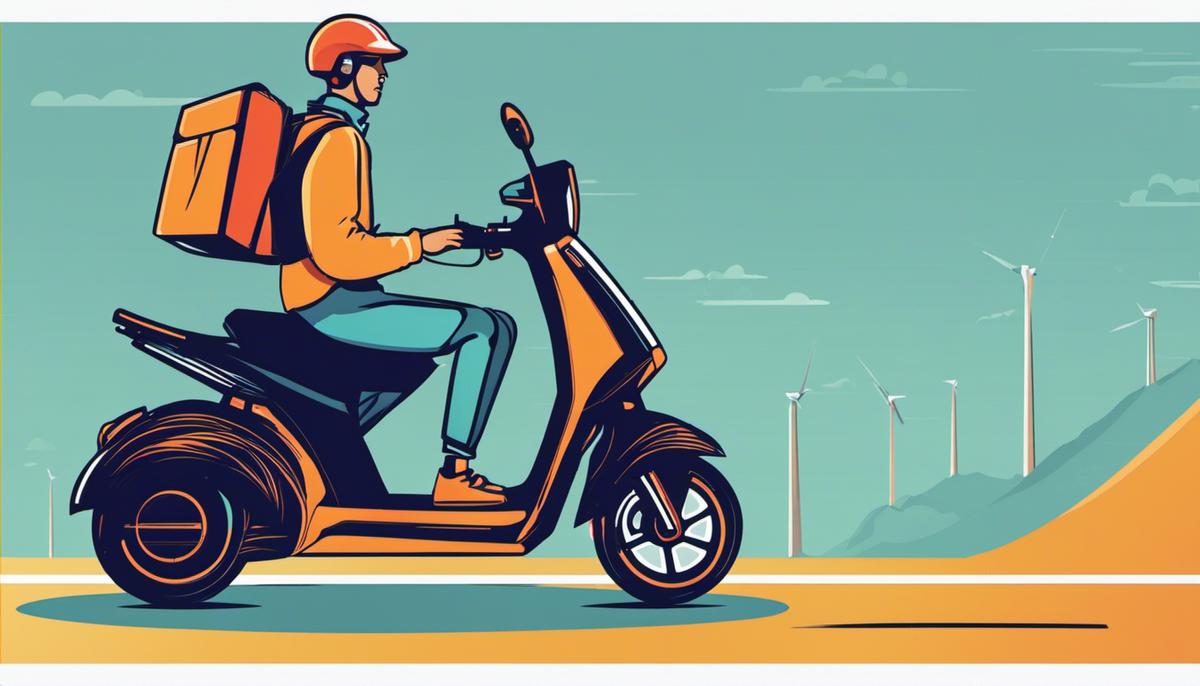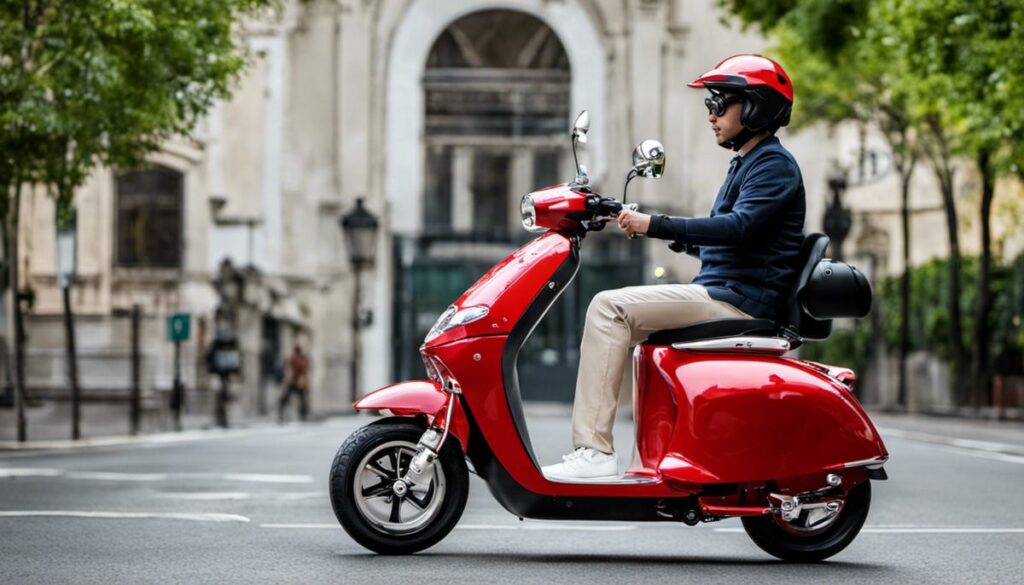In the essence of navigating seamlessly and efficiently through the urban jungle, Obarter Scooter comes as a central tool. From the rush-hour commuter to the weekend explorer, the ability to operate this nifty little machine with proficiency is a skill worth acquiring. This guide shines a spotlight on the myriad facets of understanding and using an Obarter Scooter. From understanding its basic structure and modes of operation, tackling maintenance and troubleshooting tasks, mastering advanced riding techniques and skillful battery handling, each aspect is succinctly demystified for an enhanced scooter experience.
Understanding the Obarter Scooter
Understanding Parts of the Obarter Scooter
The Obarter scooter is made up of a number of key components. The deck is the area you stand on when operating the scooter, and it often features grip tape to prevent slipping. Above the deck is the handlebar, which you grasp to steer the scooter. Attached to the handlebar are the accelerator and the brake lever. The scooter is powered by a motor, often located in the rear wheel, and a battery which is typically housed within the deck. There’s also a kickstand for stable parking when the scooter is not in use.
Exploring Speed Settings
The Obarter scooter speed settings can be adjusted by the user depending on their comfort and need. There are usually three speed modes: beginner, normal and sports. The beginner mode has a maximum speed of approximately 9mph, normal mode goes up to 13mph, and sports mode can reach speeds of up to 15.5mph. To switch between these modes, press the mode button located near the right handlebar. A beep will indicate the change of speed setting.
Understanding Light Functions
The Obarter scooter is equipped with front and rear lights for visibility and safety. The front LED light illuminates your path in low light conditions, while the rear red light functions as a brake light. To turn the lights on or off, quickly press the power button twice. Some models may also have side or under-deck lighting that can be operated via the same method or through the scooter’s companion app.
Mastering the Brakes
Obarter scooters feature dual braking system – an electric brake and a disc brake. The electric brake is controlled by the left lever on the handlebar and provides gentle deceleration, while the right lever operates the disc brake offering more immediate stoppage. Always leave a safe distance between you and any potential obstacles, as electric scooters can’t halt immediately. It is also crucial to keep the braking system well-maintained for the sake of safety. Regularly check the brake pads for wear and replace them if necessary.
Remember, understanding your Obarter scooter’s components, speed settings, light functions, and brake system are key to using it safely and effectively.

Maintenance and Troubleshooting
Routine Maintenance for Obarter Scooter
Proper maintenance of your Obarter Scooter can enhance its longevity and functionality. Ensuring your scooter is clean is a task you should never ignore. A clean scooter doesn’t just entail visual appeal; it also prevents dust and dirt from accumulating which can affect the scooter’s operation. Use a damp cloth to wipe down the scooter and clean the wheels with a brush to get rid of any buildup dirt. DO NOT wet the battery compartment or any electrical components.
Checking the tire pressure periodically is also essential to prevent punctures and enhance the scooter’s stability. Use a tire pressure gauge to check the pressure, ideally once a month. The required tire pressure varies depending on the model of the scooter; refer to the scooter manual for the recommended level.
Troubleshooting Common Issues
Like any other machine, your scooter can sometimes face issues. One such problem could be a sudden loss of power. If this happens, the issue could be as simple as a loose or disconnected wire, which can be fixed by ensuring all the wires are properly connected and not damaged. Alternatively, it could be due to a drained battery. Keep an eye on the battery indicator and ensure that it’s adequately charged at all times.
If your scooter experiences brake failure, firstly, check if there is any visible damage to the brake system. Brake cables should be checked for any signs of wear and tear. Also, check the brake pads; with use, these pads can wear down and may need to be replaced. If you are unable to detect any visible issues, it is recommended to hire a professional for examining and repairing the brake system to avoid any accidents caused by malfunctioning brakes.
However, always remember to consult the Obarter Scooter manual or reach out to customer service for any advanced maintenance or troubleshooting issues to ensure the safety of the scooter and its rider. Regular maintenance will result in a smooth ride and fewer technical issues, providing a better riding experience overall.

Optimizing Battery Performance
Optimizing Scooter Battery Performance
One of the most important ways to optimize your Obarter scooter’s battery for longer rides and overall longevity is to adopt appropriate charging techniques. It’s pertinent to make sure you fully charge your battery before setting off. However, avoid overcharging it as it could deteriorate the battery condition.
Proper Charging Techniques
To ensure proper charging, remember to only use the charger provided by the manufacturer. This will help prevent any electricity glitches that may affect the battery. To avoid overcharging, you should ideally disconnect the charger as soon as the scooter’s battery is full. Leaving your scooter constantly plugged in could result in a phenomenon known as “trickle charging”, which may gradually decrease the overall life of your battery.
Pay attention to the charging rate. Obarter scooter batteries are designed to handle a certain rate of charge. Charging at a rate higher than what the battery can handle will not only shorten the life of the battery but can also pose safety risks.
Maintaining Battery Health While in Use
While using your scooter, be mindful of how much power you’re using. Accelerating quickly, riding at top speed for extended periods, or riding on hilly terrain all consume more power. The more power you use, the more stress you put on the battery. To optimize your battery, try to use power-saving modes if available, avoid unnecessarily rapid acceleration, and plan your route to minimize hills.
Ideal Storage Conditions
Another factor to consider is how and where you store your scooter. Extremes of heat and cold can affect the battery lifespan. Ideally, you should store your Obarter scooter in a dry place at room temperature. If you need to store your scooter for a long period of time, ensure the battery is at approximately 50% charge. Leaving your battery either fully drained or fully charged for extended periods of time can degrade its overall capacity.
Remember
The key to optimizing your Obarter scooter battery performance lies in maintaining good charging habits and storage conditions. Follow these tips, and you should notice a significant improvement in your scooter’s performance and battery lifespan.

Scooter Riding Techniques
Learning the Basics of Obarter Scooter Riding
Before diving into advanced riding techniques, it’s important to familiarize yourself with the basic mechanics of an Obarter scooter. First, ensure that the scooter is charged and the tires are at the proper pressure. Stand on the scooter with one foot forward and the other towards the rear for stability. Always use both hands on the handlebars for control.
Navigating Uphill Conditions
To use your Obarter scooter uphill, first approach at a moderate speed and lean slightly forward to improve grip and stability. Lower your speed slightly if the incline is steep, but be cautious not to come to a complete stop; it’s challenging to start moving uphill again once stopped.
Recovering From Downhill Rides
When riding your Obarter scooter downhill, be sure to use both the front and rear brakes to maintain control. Don’t rush; high speeds can make it harder to stop or turn if a busy intersection or other hazard appears. Stand with a low centre of gravity, bend your knees a bit, and lean backwards to offset the downhill momentum.
Handling Irregular Surfaces
Irregular surfaces like gravel or broken pavement can be challenging on scooters. To navigate these, stand with knees slightly bent to act as shock absorbers. Maintain a firm grip on the handlebars at all times, and ride at a slower speed to maintain control.
Cruising Through Crowded Places
Crowded places can prove tricky for scooter navigation. Be mindful of others and slow down; safety comes before speed. Use your scooter’s bell to alert pedestrians of your approach. Keep a safe distance from others and be prepared to stop quickly if somebody steps into your path.
Implementing Safety Measures to Prevent Accidents
Safety should always be a priority when using your Obarter scooter. Always wear a helmet, even on short trips. Remain alert to your surroundings and avoid distractions like using your phone while riding. Adhere to all traffic rules and signals, and always use your scooter’s lights if riding in low-light conditions. Regular maintenance checks on your scooter’s brakes and wheels can also prevent mechanical issues during rides.

Mastering the art of maneuvering an Obarter Scooter is not just about navigating the terrain but also about understanding and caring for the scooter itself. Vigilance in maintaining the scooter and tech-savviness in troubleshooting proves to be as integral as adept riding techniques, if not more. Further, acknowledging the importance of battery health proves essential for the scooter’s optimum performance. Collectively, these facets lead to a safe, efficient, and exceptional scooter experience, transforming ordinary travels into extraordinary journeys.

